How to Emergency Prep for a Winter Storm
Winter is quickly approaching and that means it’s time to prepare for anything. Learning how to emergency prep for a winter storm is easy, yet it does take some time to plan. You need to know what is appropriate to pack. Follow along as you learn how to emergency prep for a winter storm.
Emergency Prep for a Winter Storm
When it comes to emergency prep for a winter storm, you need to know WHAT to do. Think of it as a checklist of sorts. You know what you need to do ahead of time, so when the time does come, you’re ready. You can’t really prepare after an emergency strikes, which is why you need to prep yourself NOW.
Prepare Your Home
One of the most important things you can do for winter storm prep is to prepare your home. Think of your home as your hiding place. It’s the place that is going to keep you warm and safe.
Your home should be fully insulated. Take the time to also go around all the windows in your home and make sure they are caulked and there is no cold air coming through.
Check doors to make sure no cold air is coming through any cracks. Doing this now will ensure you have your home fully prepped for any winter weather coming your way.
Prep Your Pantry
Prepping your pantry for a winter storm is a real thing. You will want to make sure you have the right foods in your pantry, in case of a winter storm.
If the power goes out, you won’t be able to rely on cold foods for eating. So, you will need to make sure your pantry is stocked with the appropriate foods for an emergency.
There are several canned foods I’d highly recommend that you store. Having the right canned foods on hand help to ensure that your family does not starve during a winter weather emergency.
Also, if you have to survive for several weeks off of the food in your pantry, you’ll want to make sure it’s food you can use. And for the love of everything that is good, don’t forget a can opener!
Prep a Home Emergency Kit
There is a lot more to surviving a winter storm than food and a warm home. You have to prepare as though no one else will be able to get to you. As you prepare, keep in mind that for anything you need, you may be the only resource available. It’s important to emergency prep now, so you’re ready later.
Here are some of the items you may want to include in your home emergency kit:
- Warm blankets
- Layers of warm clothes
- Flashlights and headlamps
- Candles
- Cell phone
- Cell phone charger
- Extra water and food
- A good quality generator
- Heat In A Can by Linda (use outside only)
Of course, this list is changeable, depending on who in your family needs what. This list is to give you ideas, but you should prep whatever makes you feel the most comfortable. You’ll be glad you included the right items in your supply kit(s).
Prep a Medical Kit
Prepping an emergency kit for a winter storm is important, but prepping a medical kit is one of the more important things to do. A medical kit may be all you have if something were to happen.
An emergency medical kit shouldn’t just have the basics, it should also include the more complex items.
Here is a list of items to put in a medical kit…
- Anesthetic wipes
- Splint
- Band-aids in different sizes
- Adhesive tape
- Sterile gauze
- Aspirin
- Scissors
- Safety pins
- Warm blanket
- Non-latex gloves
- Extra prescribed medicine
- Calamine lotion
- Emergency phone numbers
- CPR kit
Don’t skimp out on any of these items because you’ll want to ensure you have all of them in case of an emergency. Natural disasters happen every single day. Are you prepared? Remember that the American Red Cross can’t always get to you right away. Sometimes you’ll have to fend for yourself for a couple of hours or a few days.
What are the good things to have in a survival kit?
Whether you call it an emergency kit or a survival kit, there are some important things to have in these kits. Basic survival kits need items like water purification tablets, duct tape, metal pots, tools, an emergency poncho, a basic first aid kit, and whatever else you think you may need.
Remember that a survival kit includes the MINIMUM that you would need to survive. Get your family members involved in creating these kits. Also, don’t forget sturdy shoes!
What should I know about emergency preparedness?
Let’s talk about emergency preparedness for a minute. The whole point of prepping an emergency kit NOW is in the event of an emergency later. There are all types of emergencies that happen, you need to be prepared for them.
There are man-made disasters that happen every single year and emergency management is important. Make sure you’re doing what you can now to be prepared.
How often should you update an emergency kit?
While you may not face an emergency every single day, you should check your emergency kit every six months. It’s not something you need to be obsessed with, but it is something you should check on a few times a year.
Also, as the Centers for Disease Control update their information on disease control and prevention, you will want to make sure you update your emergency kit as necessary.
What makes a winter emergency kit different than any other time of the year?
The bottom line is that you don’t want to fall short during the winter months. Staying warm is important. Many people die from hypothermia because they can’t stay warm enough. You can’t go wrong with prepping an emergency kit for winter, you just can’t.
With all of these tips in mind, make sure you customize the winter emergency kit to your family, there may be certain things you need that other families don’t need.
Get Your Car Ready For Winter
- Rotate tires if necessary
- Put snow tires on if you use them
- Keep your gas tank at 1/2 to 3/4 full at all times
- Get your car serviced as needed
- Wash your car and vacuum the mats
- Have your anti-freeze checked
- Fill the window washer cleaner
- Rotate your Emergency Supply Kit Items
- Add some sturdy shoes to your trunk, you’ll be glad you did
Other Emergency Prep Posts to Checkout
- Emergency Preparedness – How Prepared Are You?
- How to Store Your Emergency Preparedness Items
- Survival Food and Emergency Food Storage
Final Word
I hope today’s post gives you ideas to be prepared for the coming months. It’s all about planning your emergency prep ahead of time. May God bless this world, Linda

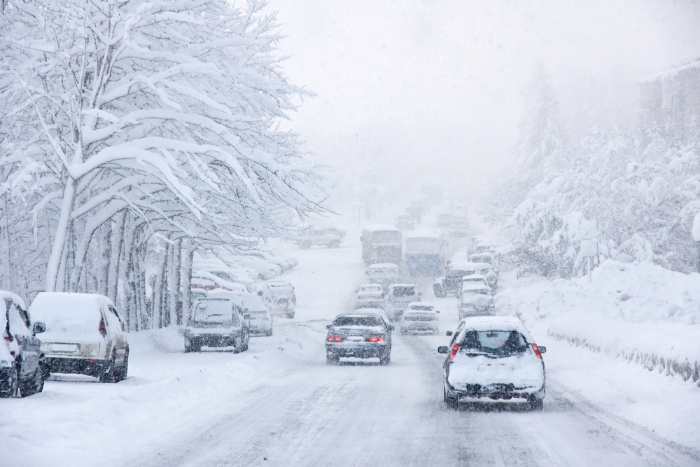

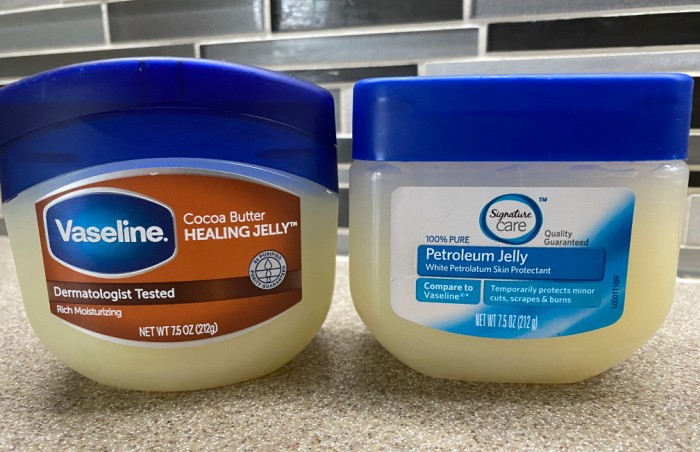
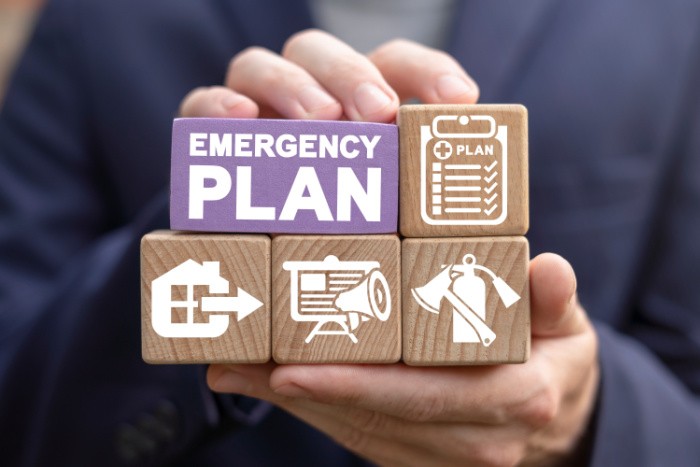
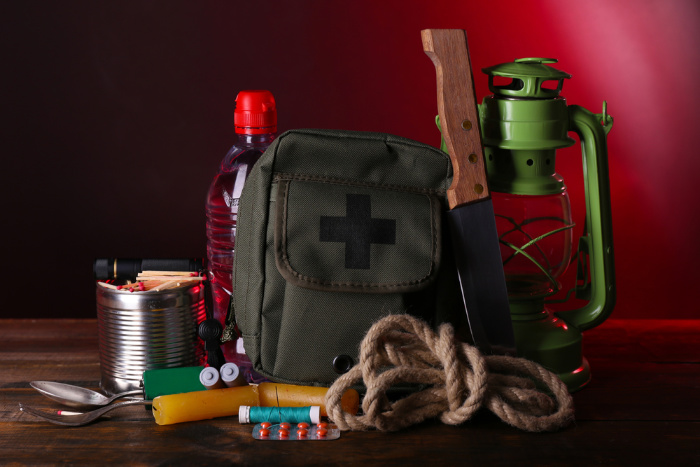

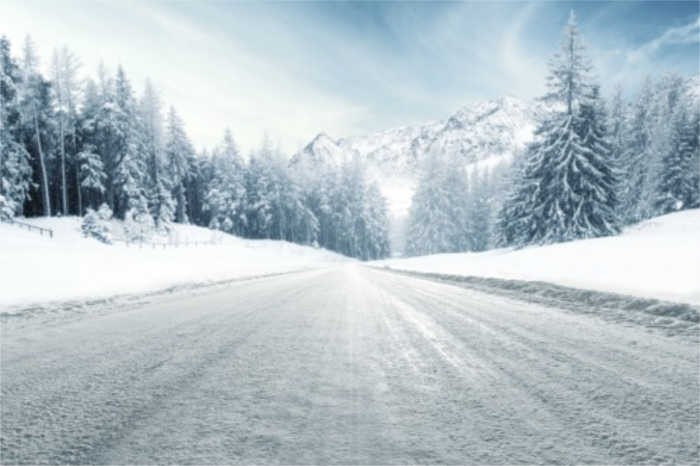
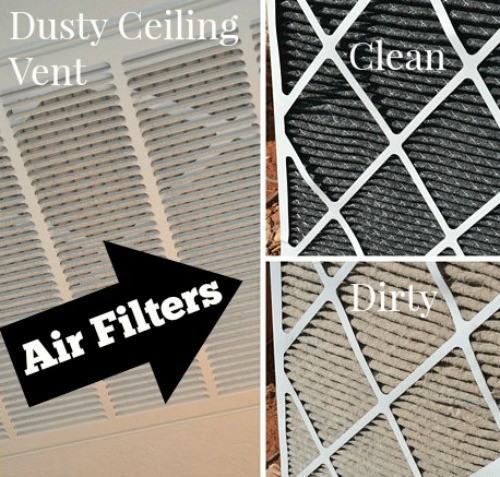
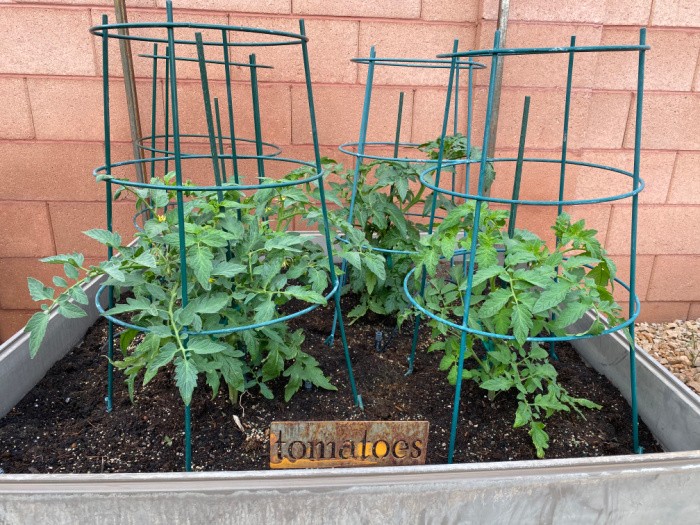
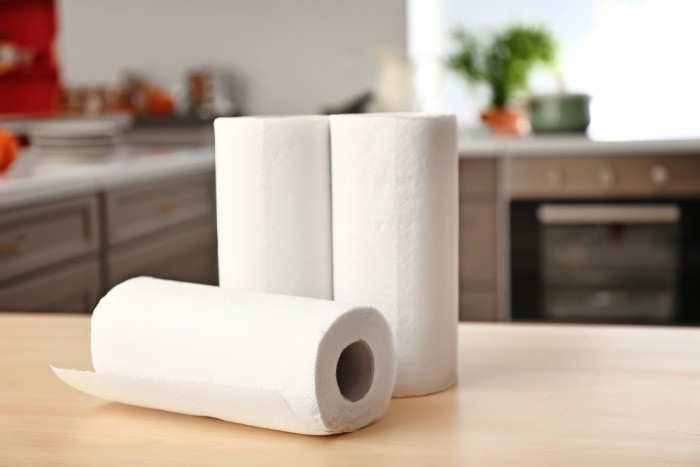
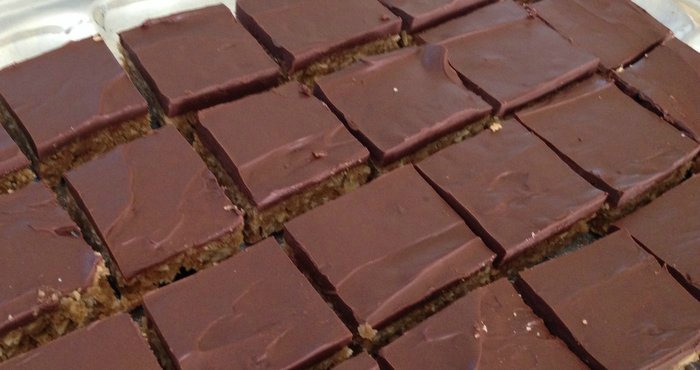











I regularly see candles on the lists for prep items. If you regularly use them I’d say fine. But for people that rarely use candles I would say go with flashlights!
My time with disaster services here is was frightening how many winter house fires were caused by those candle burning novices! Usually involved curtains too… Hmmmmm…
I tell folks if you must use candles stick with center of kitchen table and move away from window curtains if needed (out table is not near window)
Hi Bruce, great comment! This is so funny because I went to my grandsons last night who is going to college and I see a candle on his kitchen counter. I said, “Zack get rid of the candle”. Then I went on to say they are the biggest fire makers ever, save it for a disaster. I only recommend them if you have no other light sources. Thanks for the reminder, Linda
Bruce,
I wholly agree, especially since LED based flashlights and lanterns are inexpensive, reliable, and easy on batteries.
Personally I still have both Aladdin and Coleman mantle lanterns that like candles are more valuable for their heat than their light in a winter situation; but, we have safely used them for 40 years and know the rules. One thing that candles may be used for safely is heat in a vehicle or a room, by making a safe caldle heater using a #10 can. Make a row of holes in the sides of the can around the bottom to allow air into the can. We use the pointed end of the old :Church Key” can / bottle opener.
Put your candles & matches or lighter into the can and snap on the lid for easy transport. The candles I use are inexpensive tea candles or votive candles purchased on the cheap after most religious holidays.
Take off the lid, dump the contents and carefully light one or more candles placing them into the bottom of the can. The air comes into the can through the holes in the bottom and the heat from the candles pours out the top, with the fire safely contained.
Another good heater using candles is to place a few lit candles on a metal cookie sheet and cover them with an inverted terra cotta flower pot, placing the edhe of the pot on a pencil or other item to allow air into the pot. The candles will heat the pot and it will radiate more heat than just the raw candles can provide.
That same inverted port on a gas range burner can safely heat the entire room.
Our kitchen range has 4 gas burners and we have 4 pots in the cabinet for use on extremely cold winter days.
I work with our local county EMA and we find the same thing, with desperate people using open flames with no thought or practice.
The techniques I mentioned above hopefully provide some help & guidance.
Hi Ohio Prepper, these tips will come in handy for so many people! I thank you from the bottom of my heart! Linda
It’s so good you sent this out in summer because many of these tips pertain year-round, yet the thought of winter niggles…what a great wake up reminder! I used to be ‘super’ prepared but when reading your blog and the comments, I realize I’ve let slide Too Many supplies. Yep, used them! Not replaced! Lol, now this is after 15 yrs of living rural, raising my youngest son and grandson (ages 20 and 18, bigger lol). A few yrs ago, my electric co-op started putting all rural electric lines underground: what a great help but I just realized this has given me a false sense of security. I think this is what many town people have always felt? Your blog made me walk around my house, think what I have for ‘just in case’: my oil lamps’ oil is dark, grimy. I have 2 per room , lol only 1 each for the 3 bathrooms. I need to empty, clean and refill each of these. I would Never use candles to light a room, these are far safer. I checked my flashlights, battery and solar powered: batteries pretty much dead (over 5 yrs old) and the solar ones? Not sure why, but none took a charge (about 10 yrs old). Onto heat/cooking: my 2 propane gas grill tanks are empty. Looked under my huge deck at wood supply: 5 big pieces left. Yea, I have both a wood-burn fireplace and a cast-iron stove (with separate cooking grates). Well, a lot of good they would do with no dry wood. Checked my extra water tanks (yep, need elec for well). Water seemed ok but after more than 5 yrs? I didn’t even need to check my emergency med kit: it’s been depleted for awhile. Once more, thanks for your blog.
Hi Wendy, you are so nice! As I was reading your comment, I thought to myself, dang, I have two propane tanks that need filling. It’s a good reminder for all of us! You made my day! Linda
Wendy ,
“Niggles? I like that word, since it’s one of those kinds of things that always with us, wondering what we’ve forgotten.
I find that every now and then one needs to reevaluate their situation and resources. I use a technique / process known as ”The Threat Matrix: that I will describe at the end of this comment.
We are still super prepared; but, it does take time and effort to stay that way. Complacency is perhaps our biggest real threat, getting prepared and then feeling good and slacking off. I also haunt another forum, that has a weekly column: ”What I did to prep this week”, and keeping track for that weekly post with dozens of others, really helps me stay on top of things. The wife and I are retired and comfortable so it makes things a little easier than also managing a work schedule.
I’ve lived rural for nearly 40 years and the wife spent her entire life rural, growing up on a farm near here. We’ve been at this location for 35 years and are almost getting it into the shape we wanted. LOL.
Our lines are still above ground; however, our Co-op is so reliable that we rarely lose power; but, always had a generator and fuel on hand for emergencies. In late 2016 we finally installed a whole house generator, after living here for only, 32 years, so there’s always time.
That generator is fueled from a tank farm holding about 3000 gallons of propane when full, and we just filled it with 1423 gallons. The propane also heats our home, heats our water, and cooks our food, with a few heaters not requiring power.
There is also wood backup with about 2-3 cords of seasoned wood on hand.
Perhaps the threat matrix will inspire you to make a list and make all of this a habit, ”Before you need it”
You may want to invest in some newer LED lights with newer battery technologies. We have numerous LED flashlights, lanterns, and don’t forget the headlamp to free up the hands.
We primarily use Panasonic Eneloop NiMH or 18650 Lithium Ion batteries, since both of these have a large number of charge / discharge cycles.
That will happen. I have 5 and 3 are empty, so it’s time to fill them, since they can also fuel the buddy heaters.
And also for the buddy heaters, some 14-16 oz canisters need to be in the inventory.
The important thing is that you’ve noticed now, well before you need them.
Wee keep both canned and bottled water on hand; but, also have a great well and ways to filter water from our creek or a local pond. You need to think well outside the box or your own property.
That also happens, and inventory just needs to be a part of the lifestyle.
And as promised
”The Threat matrix revisited”
Something you might want to do to organize your start is a technique called ”The Threat Matrix” , that I will describe here. This tool is not hard or complex; but, will take some clear and honest thinking as you create it, and once it’s completed, you’ll have a map to start you on your way with some semblance of organization, and perhaps a little less stress. You can use paper and pencil, a dry erase board or Post-it Notes, or a spreadsheet or word processor, if you’re comfortable with one of those tools. Here is how you construct the one for your situation.
Start with a list of threats in prioritized order, with loss of your income, death in the family, or sudden acute illness at the top. Add global nuclear war and life ending asteroid strike at the bottom. Fill in the middle with the threats you and your family could actually face. As an example, in my location we can have blizzards and tornados; but, are not concerned with earthquakes or hurricanes and generally not much with floods or wildfires at my actual physical location, so be honest with yourself for your area, location, and situation.
Next, starting at the most likely / highest priority event, make a list of the resources required to mitigate that threat. A resource in this case would be Materials, knowledge, and/or skills.
Keep in mind also that often people confuse information, knowledge, and skills with each other. There is; however, a simple way to understand the difference and that is the application of each to your own situation. A library with all of its books or the internet with all of its web pages, podcasts, & videos, contains absolutely no knowledge. That content is only information. When you apply that information by reading, listening, or watching, then you gain knowledge when you start to understand the concepts.
That act of absorbing and understanding information does not however make a skill until you then apply that knowledge by ”doing” something to create a skill, and then practice that skill to become proficient. One additional concept to keep in mind is that the old maxim, ”Practice Makes Perfect” is only partially correct, since only ” Perfect Practice Makes Perfect” , especially when doing things that could be dangerous, like chopping or splitting wood or running a chainsaw, so take your time.
Once you have made your threat list, and added the knowledge, skills, and resources required to mitigate that threat, move on down to the next one on the list. What you will find is that as you move down the list, you start needing to add fewer & fewer items, since they have already been covered in the levels above. Once the matrix is complete, you have a plan with a map for the supplies, knowledge (books and other information), and skills to acquire, and like any journey, it just gets easier with a map to the destination.
Also, note that as you prepare your way down this list, other things you missed will pop into your head; but, be assured that this is normal, and as you move on this journey in an organized fashion, you should occasionally stop and smell the flowers, looking back for just a minute to see how far you’ve come. Always looking ahead will only tend to disappoint you, because this journey like life itself never has a final destination. I’ve been seriously on this journey and lifestyle for 50+ years, and still on occasion wonder what I’m missing.
Your journey forward into preparedness will be constantly changing as you acquire new resources or skills, many of which will then equip you to think of and ask questions that might not even have been thought of at the start, since we are often sometimes to ignorant to even ask the right questions. One of those resources are the incredible people here who are not too proud to admit ignorance and ask a question and often have the knowledge or skills to answer one., so don’t be shy and ask or answer.
Sometimes not knowing what we don’t know is our biggest problem; but, as you move forward, often very obvious things will pop into your head, at which point you go back and rework the matrix; but, I think you’ll find that it will only get easier and you will eventually gain some peace of mind.
I have battery and solar lights all over my house. I am never in the dark. One can gather the sun all day and use it all night. Always have batteries on hand.
I also have several ways to heat my house including buddy stove (propane), quart, new paint cans filled with a roll of toilet paper without the cardboard and alcohol. Just light it in a safe area and boy does it heat. Not recommended when you have children or pets. To turn it off, just slip the paint can lid on and wait till it is cold to bang the top on. These store well and can be used inside a house with a window cracked only a bit. fumes are not deadly as with Propane etc. However, it will suck the air out of the room.
Hi Diana, great comment. I better go add my Heat In A Can to this post. Great reminder, thank you! Linda
Diane, I like your idea of using old paint cans as they have a steel lid. My mom always made a small coffee can with candle in it for our car kits. After reading your comment plus another person’s, I have a really great idea for using both a small and larger paint can for heat and light. I will need to test this beforesharing, lol.
I used two of the quart paint cans to heat a very large room with a cathedral ceiling and a lot. One at each end of the room. I was toasty.
Hi Diane, wow, this is good to know.Linda
Hi Wendy, keep us posted, we all love ideas to share! Linda
Diane,
Don’t kid yourself. We burn propane in two permanent ventless propane heaters and several portable ones with no problem; but, assuming that alcohol fumes are not harmful is just wrong and dangerous.
The propane heaters have low oxygen sensors that will shut them down, while your paint can does not. While the alcohol burns cleaner and may have no odor, carbon monoxide may be created with low oxygen and any combustion device, so Please make sure your smoke detectors and CO (Carbon Monoxide detectors) are functional since CO has no odor and is deadly. Approximately 200 people die each year from carbon monoxide poisoning associated with home fuel-burning heating equipment. Don’t be one of them.
All good points. I guess we must still tell people to have smoke alarms and carbon monoxide devices. Even then, they don’t follow thru. However, back to the paint cans. I have Asthma and COPD. In the middle of winter and being snowed in I lit those cans and heated everything well. I live in the woods on long dirt road and seldom get plowed out. These cans are a godsend and if you are careful they will save your life. I am thinking , now, I should have said just heat the room then, turn off your cans with the lid and let the air get back to normal. When you get cold, you light again. These are not to be left for long periods of time and never be out of the room any more than a couple minutes. I have some in my Tahoe in case I get stuck on the road or in case I come on an accident and want to warm someone else. Don’t be afraid of them. Just be careful as you would with any kind of stove and fire.
Hi Diana, oh my gosh, thank you so much for your comment. This will help all of us. Thank you from the bottom of my heart! Linda
Yo are so welcome. And, Linda Let me thank you, so very much for having this site for all of us. You are a jewel. Probably a diamond. Keep up the good work. Diane
Hi Diane, you are so nice, thank you so much!! Linda
One of the easiest and safest ways to check for drafts around windows and doors is to use the punk fireworks lighters, (if you can find any.) The tiny wisp of smoke will reveal the smallest puff of air. There’s no flame and they last a long time. A cigarette works too.
HI Bob, great tip! I will have to see if I can find one of those fireworks lighters! I love it! Linda
Hi, Linda,
As you know, my home is well prepared for just about anything, but I don’t think we’ve ever discussed my car “kit.” First of all, a couple of years ago I got an old 1994 Explorer (for $500.00!) and got rid of my much newer Mariner. My wonderful mechanic went through every inch of it, mechanically, and made it like new. You couldn’t tell that by a casual glance, because I didn’t concentrate on looks, just on safety and performance. The only things I have left I really want to do is add fog lights and heavy duty bumper/grill guard. It’s advantageous to have a vehicle that can handle most anything mother nature can hand out, even if it’s not pretty. I keep snow tires on it year round. Although rare in summer, we can get snow any day of the year up here. During monsoon, we often get hail and gropple, which can be just as slick as snow. We can also have mud and rock slides year round. For the same aforementioned reasons, I make sure I replace the windshield wipers as soon as they start wearing down and keep the washer reservoir filled up with sub-freezing rated washer fluid.
In the cargo section, I have two large cargo organizers, where I keep supplies year round. I can live out of the car for at least a week, two if I’m careful, if I have to. I have a Molle style pack where I keep: four full changes of clothes, including insulated underwear, six pairs of socks, wood stick matches, Bic lighters, magnesium fire starters, mini folding multi fuel stove, mess kit w/utensils, hatchet, grinding stone, multi-tool, folding and fixed blade knives, paracord, emergency shelter/tent, a half dozen space blankets, tactical flashlight, extra batteries, a fairly small, but pretty well stocked, med kit, two 2-inch and one 3-inch ace bandages, wrist and knee braces, a dozen protein bars, a dozen individual back pack meals, two life straws, a couple of rolls of toilet paper (tubeless), a small solar charger and charging cords for the cell phone and tablet, a 12-volt adapter for the cell and tablet charging cords, a solar charging lantern, a magnifying glass, and a mirror. Outside of the pack I keep: a pair of hiking boots and a pair of walking shoes, two large rolls of duct tape, two cases of liter-sized water bottles, a pop-up 4 season tent, 4 season sleeping bag, tarp, self-inflating insulated sleeping mat, 12-volt air compressor, a collapsible 12-volt slow cooker, a 12 volt vacuum cleaner, and a 12-volt to 110 AC converter (never know when that might come in handy). I also keep extra oil, windshield washer fluid, fan belt, a tool kit, reflectors, and a couple of gallons each of water and antifreeze for the car. I’m sure there are a few items in both the pack and cargo organizers I forgot. So, I can be stuck on the road for quite awhile and be fairly comfortable, or get off the road and set up camp for up to a couple of weeks, without restocking.
I have a day pack I always have with me (never was into purses), as well. It contains: my tablet, another med kit including a variety of essential oils, protein bars, trail mix, peanuts and almonds, hard candies, an AC adapter and another set of charging cords for the cell and tablet, another folding knife, a flashlight and extra batteries, several Bic lighters, pens, scratch pads, and, as above, probably a few other things I’m not remembering off the top of my head.
Have you had as much rain and flooding down there as we’ve had up here the last few days? Radar looks like it might be building up a bit, now, and could be headed either or both of our directions. Stay dry, my friend! Big hugs, Mare
OH, Mare, you are my hero!!! You are truly the most prepared person I know! You covered it all, my friend! No, we haven’t had rain, but if you have rain it may be heading here. I dread the floods next to our backyard, urghhh! You are amazing! Great information about what’s in your car! I love it! Stay safe and dry! Big hugs, Linda
Mare, I too am as ready to live elsewhere in case I must run. I even have a full kitchen to go. One way in and one way out. In case of forest fire and living at the end of a long dirt road, alone in this forest, I will just grab the cat and PC and run with my fully stocked house in my vehicle and set up somewhere else. I have to say, You have reminded me of a couple things I need to add. So, thank you. You might add any books on survival, wild edible plants and a book on how to do light surgery and the like. There is a tool that will shave your windshield wipers and make them like new. In case they fail on the road away from a store, this is a good tool to have. Be safe and be well. Diane
Hi, Diane, you’ve made some good additions and I hope others here read your post. Unlike you, my vehicle isn’t set up for moving on and setting up elsewhere, but just to get by for a week or two, in case I get stuck somewhere away from home during an emergency. Personally, I know the wild edible/medicinal plants in my area and I was formerly both a Navy corpsman and an EMT, so I do have some medical background in case of emergency. I do keep a number of survival books on a thumb drive, with my tablet, and have both solar and 12v chargers for the tablet. I actually do have one of the shavers you mention, but they aren’t very useful where I live. I don’t have to worry much about the edges of the wipers getting pitted, because the climate I live in tends to shred them long before they ever pit. We have pretty hot summers, very cold winters, and very low humidity, so rubber doesn’t last long. Thank you for the reminder, though, because it made me think I should add an extra set of wipers to my car stash.
When I was younger, I was actually set up more like you. I could have taken off, set up pretty much anywhere, and stayed there long term. I’m in my mid-60s now and have a bad back, so my main focus these days is on getting home. I live in a tiny town, in a very rural area. The town where I live is relatively safe from both natural and man-made disasters, so my long term focus these days is on my home.
Oh, my dear, I think you have the right idea. It sounds as though you don’t have to worry about being burned out. Wonderful.
I too have a bad back but am 78 years of age. I use over the counter things like Aspercream and Salon Pas patches to get thru my days. Thankfully they work for me. I just can’t let anything stop me as I have a lot of living left to do. I am also on oxygen but still grow a large garden to grow my own food. I go to town a few times a week and am lucky that it is only 3 miles away.
People like all of us on this site are people who just keep going. I like that.
I also live in small town in what you would call country. Lots of snow in winter and sometimes hot summers with almost no humidity. I do have the best neighbors and hope you do as well.
Hi Diane, We do keep going because we are strong women! Aspercreme is our best friend!! LOL! Linda
Wow, Diane, I am in awe. I can’t even imagine bugging out to start a new life elsewhere at my age, let alone at yours. We do get wild fires here, but they tend to be in the dense forest areas, which are a ways from me. We had a really big fire that reached to within 5 miles of my town a couple of years ago. We had smoke so thick our days looked like twilight for several weeks and a couple of weeks of ashfall, but the edge that got closest to us lost steam once it hit the brush area above us. Brush fires are always a possibility in any rural area, including mine, but, unlike forest fires, they are usually fairly easy to contain.
I self-treat my back, as well. I’ve had a number of doctors, over many years, tell me I need back surgery, but, as long as I can still walk, I’ll never go under the knife. I make/use willow bark tincture and my own version of icy hot. I, also, use wild lettuce tea. Warm baths with chamomile and lavender are helpful for acute pain, when I overdo it. I can’t even remember the last time I went to a doctor and I don’t take any prescription meds. The only OTC “med” I use is a supplement. Everything else I take care of with diet and herbal remedies, the majority of which I make myself, so I know exactly what goes into it.
I’m glad to hear you have good neighbors. I, also, live in a community that would pull together in the event of an emergency.
Mare, you are so much like me, man, we would be awesome neighbors! Hugs, Linda
Hi Mare, oh my gosh, I did not know you were a Navy Corpsman and an EMT! You rock, but you know that! Big Hugs, Linda
This is not so much related to prepping for winter, although last winter here in western WA, we were hit with a pretty good (bad) winter storm that left a lot of people wanting. I will say, however, that we had 3 days prior notice that this was going to hit and hit hard.
So, this morning, I am on my computer just dinking around when our fire alarms went off (I live in an apartment complex for seniors). Normally, if there is going to be a test of the alarms or a drill, we are given prior notification – not the date/time of a drill but… Anyway, we had not been notified so I knew it was some sort of emergency. So, I grab my phone, keys and purse, as well as a small backpack intending to spend a bit of time in the great outdoors! Darn it all, though, I left my full coffee cup sitting right by my computer! LOL!
My backpack includes several bottles of water, granola bars, mints, extra keys and various other items. Not a bug out bag but something that will suffice in the case of our emergency. Someone asked me why I had all of that including my purse. I told them that if we had to leave in our cars or leave the property, I was not going to be without my ID, debit/credit cards and my cash.
Well, I was totally amazed at the idiocy of some people!
1) 3 people took showers after the alarms started going off and then came out. One guy said he didn’t think it was anything serious!
2) My upstairs neighbor has a cat and she did not even try to locate the pet. So, she was going to go back to her apartment even though we had all been told there was a fire. Crazy!
3) People milled around the stairwells while others were trying to get out of the building. I was yelling at people to get out of the way but most are hard of hearing so I went over and told several women that they needed to get across the street to allow the people exiting free passage as well as access by the firefighters.
I am sometimes amazed at what people do in crazy times like this.
So, I have a suggestion for your list in this post. Headlamps – they are flashlights but strap onto your head, leaving your hands completely free. I have one in my bug out bag that I attached to a ball cap and have the batteries in a little zip lock bag safety pinned to the hat. I also have another one that is not attached to anything. This DOES NOT take the place of other flashlights, though.
Addressing the issue of candles – where I live, I hope and pray that most of the people do not use candles at all! But – you can use candles safely to heat food IF you line your kitchen sink with aluminum foil, place 2-3 short pillar candles on the foil, light them and place your oven rack over. Then you can place a small pan over the flames and heat soup or water. But, you MUST line the sink with foil to prevent any wax from going down the sink drain. I have used candles with 2-3 wicks that are in glass containers. I also have a number of 100 hour emergency candles that I would use for this purpose. Also, one can place the candles in a baking dish to prevent wax spills.
Hi Leanne, the showering??? Good grief! The headlamps are a great idea! I have several sets after taking my CERT classes. I will go add that to the post. I wish you were my neighbor we could survive anything! Good job! Linda
Prepare Your Home
When I see a title like this, my first thought, is that it should always be prepared for anything; but, I may be in a unique situation, living on relatively self reliant a rural 8 acres for the past 35 years
Although it took years to accomplish, we finally have the entire house foam insulated with all new windows, exterior doors and storm doors, making the last several winters AND summers quite affordably comfortable.
We recently purchased our yearly propane fill for the best price and overall cost in years. The total was 1423 gallons @ $0.959 (95.9 cents) per gallon plus sales tax. This fills all of our tanks up to the 3000 gallon total storage capacity on site. We used propane to heat the residence (gas forced air furnace & 2 ventless plaque heaters), run two gas ranges (burners & ovens) and heat our domestic hot water. It also fuels the whole house auto start generator in a grid loss situation. The total amount of propane was the smallest due in part to the insulation & windows / doors and that price was the best in years.
Prep Your Pantry
We have plenty, and using the prepper maxim ”2 is one & 1 is none”</strong one needs to have at least two ”manual” can openers.
Some of our can like the ready to eat ”Progresso” soupds have a pull tab fo open the can, as fo items like sardines, for easy opening, heat & eat meals.
Prep a Home Emergency Kit
Agreed; but, this preparation should be a mindset and be almost constant. Keeping this mindset allows you to purchase needed gear when you see it on sale especially when out of season and not specifically on you list.
Here are some of the items you may want to include in your home emergency kit:
1. Warm blankets and sleeping bags.
2. Layers of warm clothes keeping in mind that loose fitting clothing layer tap air to keep you warmer and are likely to be more comfortable over time.
3. Flashlights and headlamps LED versions are inexpensive, reliable, and battery efficient; but, don’t forget the LED lanterns for whole room area lighting.
4. Candles I think the caveats on these have covered the topic rather well.
5. Cell phone These may not work; but, a battery or solar powered receiver to get the local news & EAS warnings is important. Also two way communications with inexpensive FRS or ham radio (with a license) can be useful. My favorite all in one do everything receiver is the Kaito Voyager” powered by USB, solar, or crank, and covering standard broadcast AM & FM, shortwave, and weather bands.
6. Cell phone charger; but, in case of no power, some of the fully charged lithium battery banks can top off phones & tablets as can the USB output of that Kaito Voyager radio I mentioned. Multipurpose is a good thing for any tool.
7. Extra water and food & a means of filtration to make additional potable water from a non potable source or snow in this winter emergency.
8. A good quality generator. I cannot agree more. We’ve used several generators over the years; but, finally saved up to purchase a whole house Generac, fueled by our tank farm, currently containing about 3000 gallons of propane after our summer fill. You’ll need to keep fuel handy and safe and cans of gasoline or diesel can spill to cause a fire hazard and has limited shelf life. A propane or natural gas fueled generator will be more reliable, and keeping the 20 pound BBQ style tanks on hand make it an easy fuel to transport and store with indefinite shelf life.
9. Heat In A Can by Linda (use outside only) You can still get canned heat such as Sterno that is used indoors all of the time for keeping food warm on buffet tables. I keep several cans on hand both for heat and field expedient cooking.
Prep a Medical Kit
Here is a list of items to put in a medical kit with my additions
• Anesthetic wipes and antiseptic wipes.
• Splint
• Band-aids in different sizes
• Adhesive tape we find paper tape works best.
• Sterile gauze both by the roll and the individual package like a 4×4
• Aspirin We keep a lot of the low dose (81 mg) on hand that works for children and adults (4 at a time)
• Scissors We prefer the inexpensive shears with rounded tips made for working on wounds and bandages.
• Safety pins very handy
• Warm blanket and aluminized Mylar Space blankets including the grabber version with grommet & hood.
• Non-latex gloves Nitrile gloves are inexpensive and avail be many places.
• Extra prescribed medicine as much as you can have prescribed & afford. I’ve been honest with my doc and she has prescribed extras of non-narcotic medications I use, so talk with your doc.
• Calamine lotion
• Emergency phone numbers
• CPR kit By this I assume you mean CPR mask.
• I would also add:
• Isopropyl alcohol
• Hydrogen peroxide
• Clean cheese cloth or flour sack cloth
• Single use tubes of Cyanoacrylate glue (AKA Super Glue or Crazy Glue), originally developed for field expedient emergency wound closure.
How often should you update an emergency kit?
The things to check are:
• The level of gear is it’s been used
• Batteries in all battery powered devices
• Expired medications.
Hi Bruce, I need to check out that book! Thanks again for your suggestions, you are truly prepared for any situation! Life is good when we prep before we have to! Great comment as always, Linda
Linda,
When you state:
You are quite welcome; but, I’m not Bruce. LOL
Many libraries carry Tom Brown’s books and they are all worth having or at least reading; but, the one on urban survival may be the most useful for many readers who still dwell in the cities.
I try to be prepared for anything; but, it is still a continuous effort to evaluate and keep ahead of things, yet another reason to visit sites like this one and the others I haunt, since a fresh perspective is always a good thing to consider.
I’ll often learn something I didn’t know when researching a question from a newbie, since real preparedness is a lifestyle.
Perhaps my biggest prep is my farm raised wife of 37 years who is also fully involved with the lifestyle.
If you or others here would like to correspond, you can click on my name and the website will help you send me an email. In the email body simply mention this site and the Nom De Plume used here.
I currently correspond with people all over the country from California & Arizona to Florida & Massachusetts.
I am retired and like to help others with this lifestyle
Hi Ohio Prepper, you are so nice! I’m not sure what I did! Linda
Do you have a harbor freight in your area? They often have a ‘free’ coupon for some really nice led lights and the new model is fantastic! Here’s a link to see what they look like – https://www.harborfreight.com/ultra-bright-led-portable-worklightflashlight-64005.html
I hope links are allowed…
if not go to web site of harbor freight and search for “led” they are flat, blue & black about $4 normal price and called “Ultra Bright LED Portable Worklight/Flashlight”
Hi Bruce, yes this link is okay because it has https which means it’s secured. I’m heading there to check out those coupons!! Linda
Bruce,
I have several, since with the coupon they are free (with any other purchase); but, you forgot to mention that they come, ready to use, with batteries already installed and have a magnet inside that allows it to be stuck many places instead of holding it.
I also like the meters and the free magnetic bowls; but, haven’t seen those in a while.
I google – harbor freight coupon
today this was first up… and it has coupon!! free light and another for 20% off an item (+ others)
https://shop.harborfreight.com/digitalsavings.html
Hi Bruce, oh man, I love coupons!!! Thank you!!! Linda